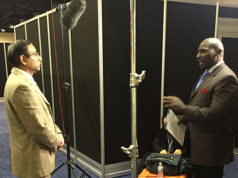
New research has identified that inciting events may be associated with a positive outcome for patients diagnosed with lumbar facet joint pain. Charles Odonkor (Associate Faculty, International Rehabilitation Forum, Johns Hopkins University, Baltimore, USA) presented the findings at the 16th Annual Pain Medicine Meeting, run by the American Society of Regional Anesthesia and Pain Medicine (ASRA), on 16 November. The abstract received both a Best of Meeting award and a travel award.
Odonkor’s group aimed to identify what subset of patients reported an event precipitating their radiofrequency ablation treatment for lumbar facetogenic pain, and whether there was any correlation between specific precipitating events and their treatment outcome.
Patients who reported a precipitating event were one-and-a-half times more likely to have a positive outcome than those who could not recall a specific event leading to their pain (p=0.01).
The study also found that a shorter duration of pain was associated with a positive response to radiofrequency ablation (8.1 years vs 9.7 years, p=0.02), and that patients reporting a single precipitating event compared to multiple events were one-and-a-half times more likely to experience a positive result.
In patients younger than 65 years, the most important factors associated with a positive outcome were a duration of pain less than 10 years (p<0.001), and reporting a single precipitating event as opposed to multiple (p=0.002).
Odonkor and co-authors, including equal contributor Yian Chen, concluded that not only are precipitating events common in patients diagnosed with lumbar facetogenic pain, but that those events are likely associated with a positive outcome.
They speculate that “inciting events may actually represented the tipping point for which cumulative degenerative processes may cause the patient to experience nociception.”
Highlighting the important of this research, Odonkor said: “Chronic low back pain is the number one cause of disability in individuals under the age of 45 years. It is estimated that one out of every four cases of axial low back pain is due to lumbar facet pain.” However, he added, “the exact mechanisms or events leading to lumbar facet pain remain unknown.”
The study was conducted retrospectively on 1069 institutional patient medical records, where there was available information about RF ablation procedures for lumbar facet joint pain over the nine-year period January 2007–December 2015. All patients in the cohort reported greater than 50% pain relief after one or more diagnostic facet blocks.
A positive outcome was defined as a period of greater than 50% pain relief which lasted more than three months after the procedure, without additional interventions. Of the cohort, 57.7% patients fell under this definition (n=617).
Forty-eight per cent of individuals in the cohort reported no precipitating event, and of those reporting an event, falls, motor collisions and sports-related injuries (all 11%) were the most common. Non-spine postsurgical injuries were reported at 2%, and other events at 17%. Weightlifting (included in “sports-related injuries”) alone accounted for 7%. Of those patients who reported a precipitating event, 61.3% experienced a positive outcome compared to just 53.9% of those who did not recall a specific precipitating event (p=0.01).
“I would like to thank the American Society of Regional Anesthesia and Pain Medicine for recognising our work with a Best In Meeting research paper award, and a travel award to attend the 16th Annual Pain Medicine Meeting in Disneyworld, Florida,” said Odonkor.
The authors acknowledge that their study has not looked at the temporal component of precipitating events nor at patients’ comorbidities, and that patients’ reporting of an event does not necessarily establish causation.
The full article, now available online as a pre-print, will be published in a forthcoming issue of Anesthesia & Analgesia. Funding for the research was partly provided by the Centers for Rehabilitation Sciences Research in Bethesda, USA.













